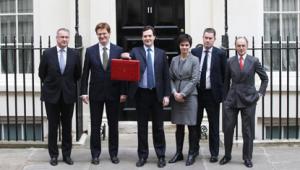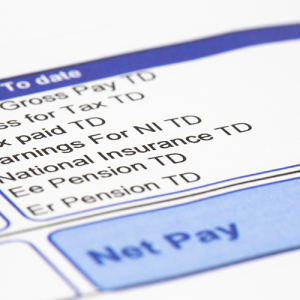Last November, the chancellor wrong-footed his audience by presenting a surprisingly positive Spending Review. He extended protection from future cuts to new areas of spending such as the police, 16-19 education and adult skills. He recommitted to existing protections, including for the NHS, for defence and for schools. And all of this was pledged alongside a forecast to eliminate the budget deficit – indeed, to reach a surplus of £10bn – by 2019/20. This was made possible after policy changes and OBR forecast revisions unlocked a cumulative £48bn of extra resources over the forecast period.
In recent weeks, it has become clear that the arithmetic underlying the chancellor’s commitments is unravelling. According to the Institute for Fiscal Studies, a combination of disappointing earnings growth and lower equity prices will reduce tax revenues by £7bn in 2019/20. At the same time, the Conservative manifesto pledge to raise income tax thresholds is yet to be paid for. To keep that commitment in full would cost a further £8bn a year. Adding this to recent negative surprises implies that, without mitigating action, the chancellor will find himself £15bn short of where he said he would be at the end of the parliament.
Where could the chancellor look for this money? Some attractive options, such as much-needed reform of pensions tax relief, look to be off the table. Any increases in income tax, national insurance or VAT are ruled out by the ‘tax lock’ commitment in the Conservative manifesto.
The chancellor hinted over the weekend that he intends to crash-diet his way to £4bn of savings, by finding further ‘efficiencies’ in departmental budgets. But outside of protected spending, and the devolved budgets of Scotland, Wales and Northern Ireland, there is very little left to cut: our calculations suggest that the day-to-day budgets of unprotected departments would need to fall by 36% to save an extra £4bn over the forecast period, compared with a fall of 30% announced in the Spending Review. This would mean further cuts to budgets that are already stretched, including local government, the Department for Energy and Climate Change, and the Department for Work and Pensions.
Last week’s announcement on disability benefits, expected to save £1.2bn, suggests Osborne intends to meet at least some of the bill through welfare savings. But recent attempts to make big savings in this way have cost him significant political capital. More importantly, there are few places left to look: the single biggest welfare expenditure, the state pension, is protected by the ‘triple-lock’ commitment. Further, announced changes that had been expected to deliver savings, such as pay-to-stay, which would have put up rents for social housing tenants earning above £30k, have come unstuck.
Other options for raising money include stealthy (or overt) tax rises, and asset sales. Appetite for the former is likely to be muted given the risk-off environment the EU referendum has created for the chancellor: he won’t want to upset his back benchers. And the chancellor is already planning to do a lot of the latter, but the proceeds will go directly to paying down the national debt, so won’t help with the deficit forecast.
The only sensible solution – though unfortunately the one least likely to be chosen – would be to bite the bullet and slow the pace of deficit reduction. With government borrowing costs still touching historic lows, there looks to be little risk that the markets would punish the UK for slowing fiscal consolidation. Indeed, given the economic headwinds facing the UK, the economically literate thing to do would be to make some additional investments, for example in skills and capital projects.
There is a wider point, made repeatedly by the OBR, that Osborne is yet to acknowledge: our public finances are not sustainable long term, regardless of how well we do at deficit reduction over the next four years. Tackling our biggest fiscal challenge – how to meet the costs associated with population ageing – means boosting the revenue-raising power of the economy. Trying to pay the bill by cutting public expenditure simply won’t be enough. With the political energy so focused on trying to fit through the eye of the needle and hit budget balance or better by 2019/20, this much more important point is lost.
The best deficit reduction strategy would be to work on improving the economy so it is sustainable over the long term. Action is needed on two fronts. First, we need to ensure the economy continues to grow in such a way as to make continuing to meet claims on public spending affordable, even in the face of a rapidly ageing population and all the associated costs that will bring. Secondly, the tax base of the UK needs to be more resilient. Partly this is about reforming the tax system so that it meets the demands of public spending needs in an efficient way, but it is also about collecting tax that is owed, and not pursuing populist but expensive and regressive tax cuts of the sort promised in the Conservative manifesto.
Together, this would require a much more nuanced strategy for the sort of public expenditure that ultimately generate savings and revenues for the public purse, and an honest appraisal of the things holding us back. Whether the chancellor can make the shift from tactician to strategist remains to be seen.




















